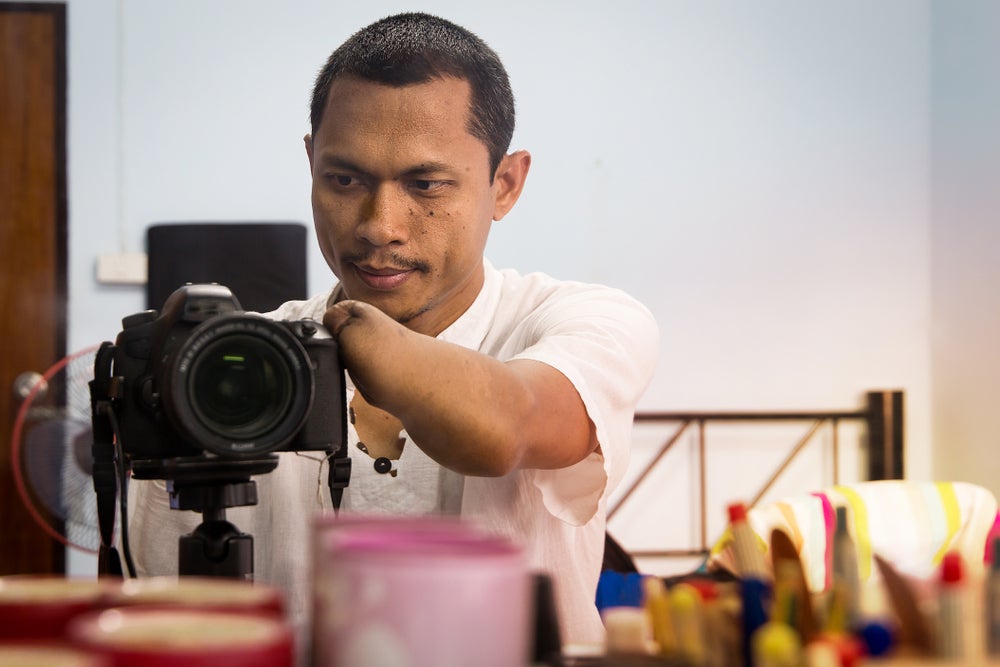Contrary to popular belief, legal careers abound with opportunities for creativity to flourish. Lawyers tap into creativity every time they:
- Solve modern operational challenges for the first time;
- Communicate with clarity in the boardroom;
- Help companies behave and communicate in ways that build customer trust and loyalty;
- Propose win-win solutions during contract negotiations; and
- Build a strong personal brand on social media.
And even more opportunities await.
You’re already creative — you may just need to clear the path to access your imagination more easily.

Here are five ways you can move into a creative problem-solving space intentionally to jump-start your imagination and systematically tap into your creativity:
1. Reframe your view of what’s possible.
For many lawyers, the more you seek to avoid risk at all costs, the more your creative flow gets restricted. But businesses measure risk and opportunity with the same yardstick. Accepting risk is easier when you can identify, measure, and manage it using data tracking and analytics.
Companies can now track years of metrics, activities, and outcomes, gaining real-time access to the wisdom you used to acquire only in hindsight. You can evaluate the effectiveness of past decisions and predict short- and long-term consequences of future actions more accurately.
As a result, you can release the need to eliminate every risk when you’ve identified which risks are manageable. You become more confident in guiding decision-makers to take calculated risks and measurable actions. That confidence allows your creativity to flow stronger and view business developments in new and exciting ways.
You can release the need to eliminate
every risk when you’ve
identified which
risks are manageable.
2. Mine the intersections where professions meet.
Other professionals are one of the richest sources for new and innovative-thinking models, particularly in areas where disciplines connect and ideas flow from one field to another.
Collaborate and socialize with people from other disciplines, inside and outside your organization. Invite them to co-innovate mutually beneficial solutions. Encourage them to challenge your traditional assumptions and take the time to appreciate the view from their perspective.
Many lawyers discover fertile creative ground at the intersection of law and psychology. Others discover new frameworks for thinking where law and economics meet. Just as combining French and Vietnamese cuisine can yield fresh and flavorful dining experiences, the intersection between law and other professions is rich terrain for your imagination.

3. Daydream with purpose.
Daydreaming can help you find creative solutions to a problem, and people who daydream more frequently in everyday life are generally more creative, a UC Santa Barbara research team found.
But we all know our internal critic can shut our creativity down before it has a chance to blossom. That’s why it’s important to intentionally allot time to exploring our daydreams.
Suppose you get what seems like an impossible problem to solve. Pretend you already live in a world where what’s being asked has already come to fruition. Stay with that vision of success for a full 20 minutes. Inspect this new world. What had to change to allow the solution to come to be? Is it really so impossible? Look for what can work, even if you don’t know exactly how to make it work yet.
Look for what can work, even if you don’t know exactly how to make it work yet.
You’re not looking for a problem-free path to complete perfection. You’re making connections, discovering how pieces of the puzzle fit together. When you find one workable idea, you may find one or two more ideas to tinker with, which can lead to another idea, and another.
4. Explore the visually artistic side of your creativity.
Lawyers are trained to use words, but that’s far from our only tool. For example, data visualization tools that produce charts and graphs give us one of the most creative ways to increase comprehension when communicating complex ideas in the boardroom. But that’s just the tip of the iceberg when it comes to exploring the visually artistic side of your creativity.
Today’s world is full of images. Social media posts often include memes and GIFs to convey sentiments. The trend in using images in contracts helps make law more accessible to more people. Consider using infographics, memes, charts, emojis, and other images when developing messages and exploring creative solutions. Simply doodling can be useful! Visual aids bring your imagination to life, and visual stimuli tap into people’s emotional response centers to inspire people to react to images faster and more strongly than words alone.
5. Promote a safe environment for creativity to thrive.
Creativity is delicate. One raised eyebrow can send it scurrying for cover.
Don’t set limits — or let anyone else set limits — on how you reach your inner creativity or the ways you implement a creative approach to problem solving.

Purposefully set aside time to enjoy your creativity. Procrastination, excuses, blame, apathy, scorn, and negativity kill creativity. When you see them marching down the hallway, slam the door and banish them from your presence. Adversity, discouragement, and temptation are typically fast on their heels. You can’t always avoid them, but you can work through them.
Our creative growth is a lifelong process. Practice letting go of limitations. Zig Ziglar said, “Go as far as you can see. When you get there, you will always be able to see farther.” As we continue to grow creatively, we’ll discover more opportunities to build a better future of law.




